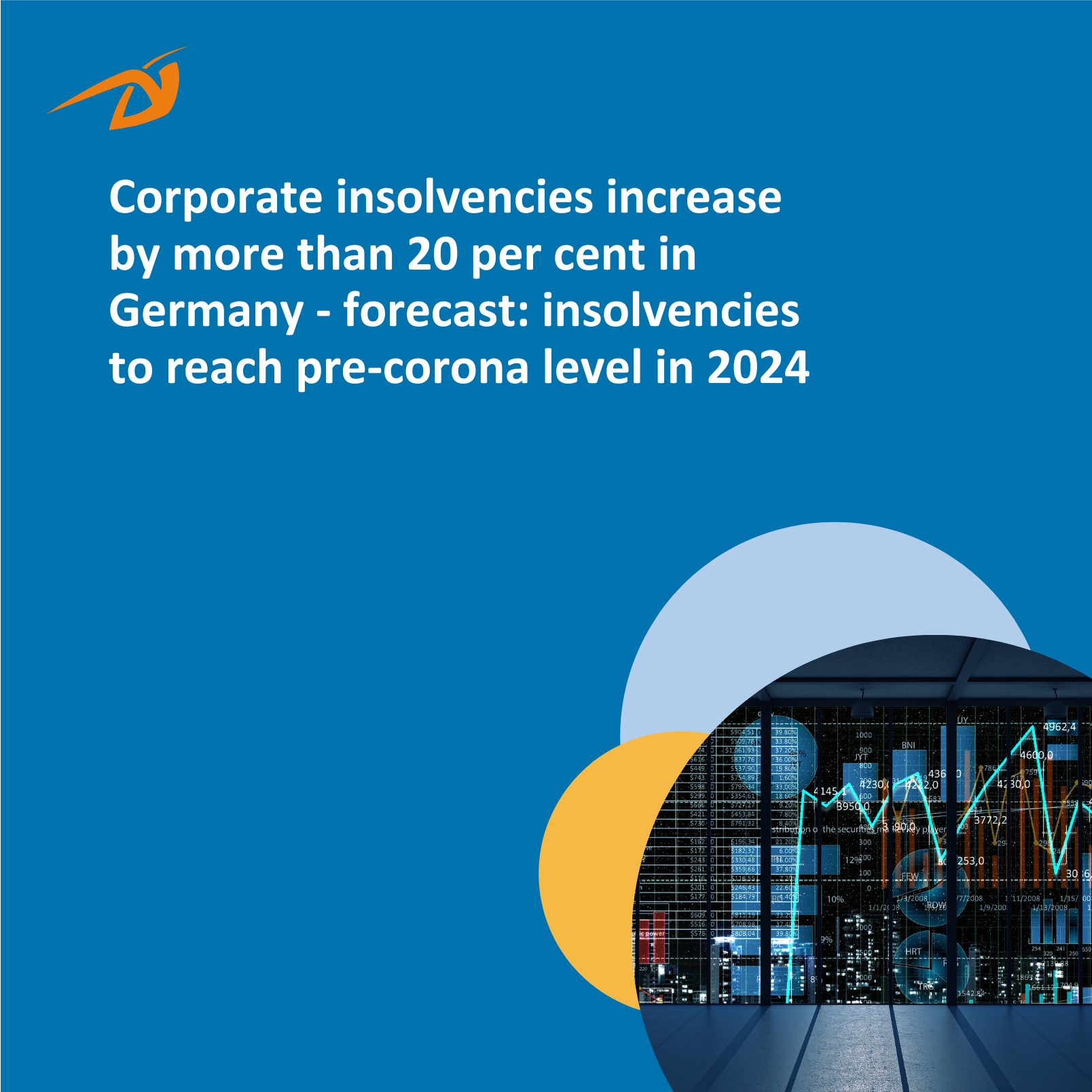-
Corporate insolvencies increase by more than 20 per cent in Germany - forecast: insolvencies to reach pre-corona level in 2024
Read MoreLast year, 17,847 companies filed for insolvency in Germany. This represents a 22.4 per cent increase in company insolvencies...
-
CRIF and Anonos Join Forces to Deliver Responsible AI Solutions Through Privacy-Preserving Synthetic Data in the Age of Generative AI
Read MoreNew York City and Bologna, May 23, 2023 - CRIF and Anonos - an innovator in enterprise data privacy, security and enablement,...
-
Corporate insolvencies rise by 4.2 percent in Germany - moderate increase in corporate bankruptcies forecast for 2023
Read MoreDuring the last year, 14,578 companies filed for insolvency in Germany. This represents an increase of 4.2 percent in corporate...
-
New Supply Chain Act since January: Synesgy platform makes collecting relevant information from suppliers particularly easy
Read MoreSupply chain due diligence act (LkSG) will become a data and IT challenge for many companies - more than 3,600 companies will be...
Insolvency risk in the gastronomy industry increases significantly - Number of gastronomy companies at risk of insolvency rises by 30.8 percent in Corona pandemic
The gastronomy industry is one of the branches that has been hit hardest by the measures taken to contain the virus. A recent analysis by the information service provider CRIF, in which more than 100,000 industry companies were evaluated, now shows that the consequences of the pandemic have significantly increased the risk of insolvency in the gastronomy sector.
Currently (as of January 2022), 16,567 restaurants, pubs, takeaways and cafés in Germany are considered at risk of insolvency, according to the evaluation. That is 16.2 percent of the businesses analyzed. In January 2020 - before the Corona pandemic - the number of restaurant companies at risk of insolvency was 12,662, or 12.4 percent. Compared to January 2020, the number of food service firms that are financially weak and therefore at risk of insolvency has increased by 30.8 percent in January 2022.
A look at the regional figures shows that the risk of insolvency among food service companies has increased in all German states. This was particularly marked in Bremen (up 61.2 percent), Hamburg (up 39.9 percent), Berlin (up 37.6 percent) and Saarland (up 36,8 percent).
By contrast, the absolute insolvency figures in the gastronomy sector declined in the crisis years 2020 and 2021. In 2020, for example, 1,640 gastronomy companies had to file for insolvency. This corresponds to a decrease of 19.6 percent compared to 2019. In 2021, there were 1,456 gastronomy insolvencies, which is 11.2 percent less than in 2020. The main reason for the low number of insolvencies is the moratorium on the insolvency filing requirement in combination with the numerous support packages for businesses.
"Due to the Corona crisis, many gastronomy companies in Germany are currently experiencing economic problems. The number of insolvencies from the last years does not reflect this situation", comments CRIF Managing Director Dr. Frank Schlein on the current figures. As the insolvency statistics refer to the past, the exact effects of the Corona crisis will only become visible downstream. In 2022, CRIF expects up to 2,200 insolvencies in the restaurant industry (plus 51 percent).
In the current analysis, CRIF also evaluated for the first time how many restaurant businesses were dissolved. In 2019, and thus in the year before the Corona crisis, 2,578 restaurants, pubs, snack bars and cafés disappeared from the market. In 2020 (2,155) and 2021 (2,225), there were correspondingly fewer foodservice businesses no longer active in the market.
For the study, CRIF analyzed information on the financial position of 101,956 foodservice companies that provide information on solvency. This includes information in balance sheets, profit and loss statements, employee and sales figures or payment experiences. Negative court features such as dunning procedures, debt collection monitoring or general entries in the debtors' register were also included. Insolvencies and companies that disappeared from the market are not part of the 16,567 companies at risk of insolvency.





